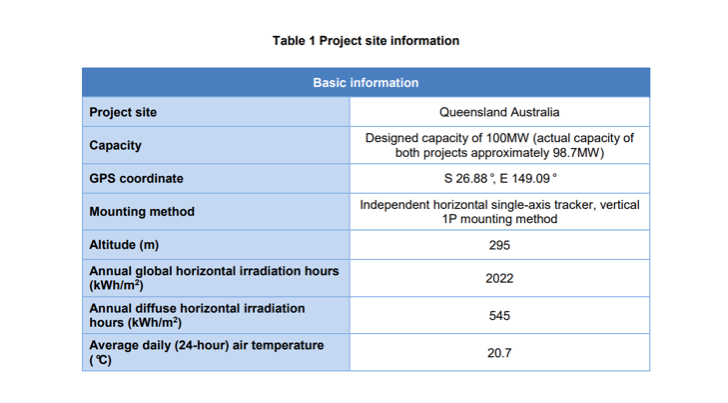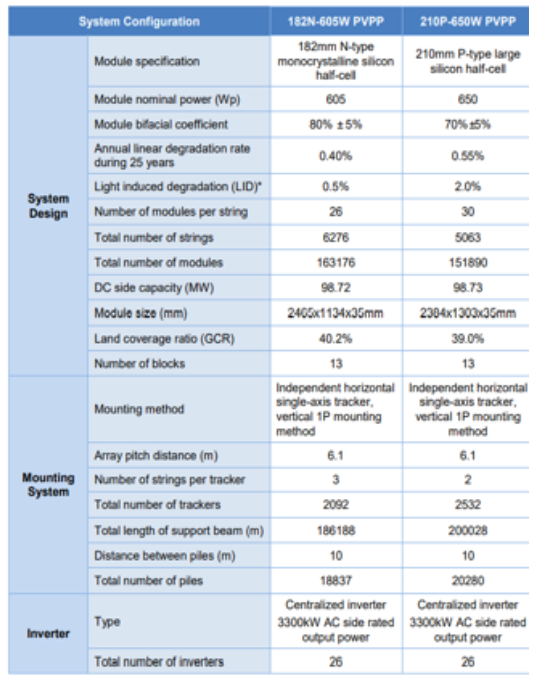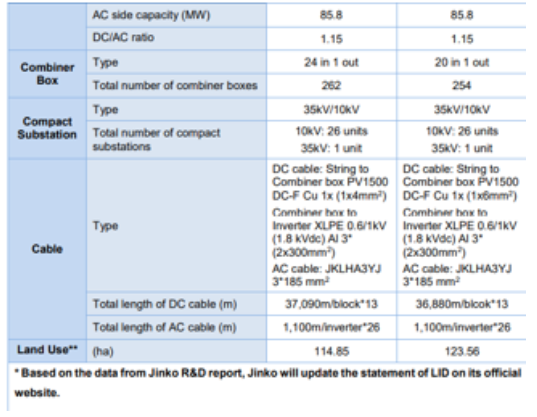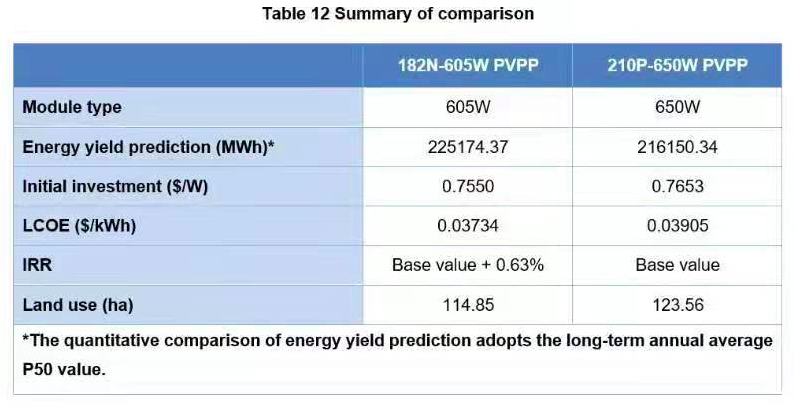The difference in economic performance between JinkoSolar’s N-type high-efficiency module (182N-605W) and other mainstream high-efficiency modules of the same class in the market (210P-650W)has been under simulation analysis by TUV Rheinland to determine whether the final return meets the needs of investors and project developers.
Location & Resources
The plant is located in Queensland, Australia, with a designed capacity of 100MW. The associated mounting system is an independent horizontal single-axis system with one module in portrait orientation (1P). The basic information of the site is as follows:

The Design Scheme
The PV system is designed on flat ground suitable for large-scale PV power plant construction and with a high-voltage grid near the site to facilitate grid connection. The two projects are built on an approximately equal land area with similar capacity ratio to reduce differences in yield production. The photovoltaic system-side configuration of the two projects are as follows:


Summary of Simulation Result
Under the same DC-side capacity, land availability, system design principles and component costs, the LCOE of the project using N-type TOPCon shows a significant advantage, summarized as follows:
ï Comparison of energy yield prediction
The project using N-type TOPCon modules (182N-605W) is expected to generate 4.2% more in total yield than that deploying PERC bifacial modules (210P-650W) over the 25-year full-life cycle, primarily due to a larger bifacial coefficient (80%±5% for 182N-605W module and 70%±5% for 210P650W module), a lower annual linear power degradation rate over 25 years (0.4% for 182N-605W module and 0.55% for 210P-650W module), a smaller temperature coefficient (-0.30%/°C for 182N-605W module and -0.34%/°C for 210P-650W module) and a lower initial LID rate (0.5% for 182N-605W module and 2.0% for 210P-650W module).
ï Comparison of LCOE
Compared with the project using PERC bifacial modules, the LCOE of the project deploying N-type TOPCon modules is expected to be 4.4% lower due to lower initial investment costs and higher energy production;
ï Comparison of land use
The land required for the project using N-type TOPCon modules is expected to be 7.0% less than that of the project using PERC bifacial modules due to shorter support beams and higher GCR for the 605W module at the same array pitch distance;
ï Comparison of initial investment
Investment is 0.01$/W lower for the project using N-type TOPCon modules compared with that using the PERC bifacial equivalent, due to lower BOS costs and reduced land area required.


